Apr 6, 2023 | Blog
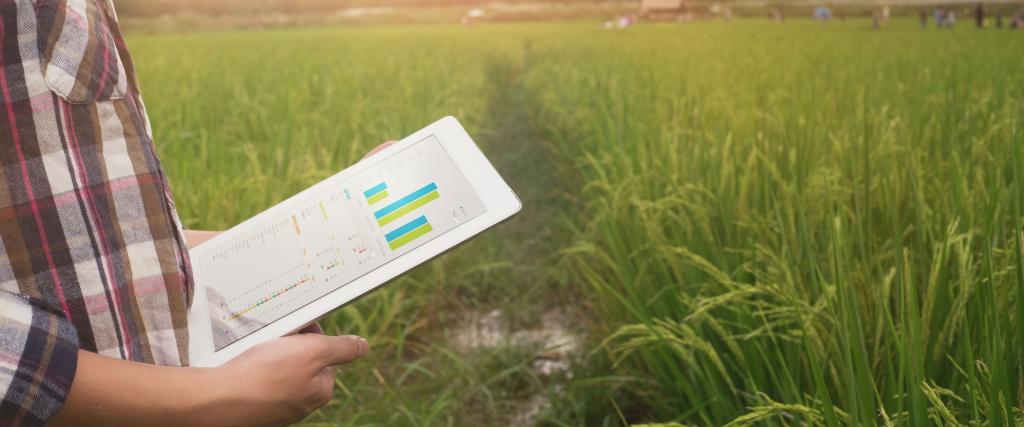
Introduction
Agriculture has been the foundation on which human civilization was built. It has always played a vital role in the prosperity, development and well-being of society. It provides food, fiber, and fuel for the world’s population, employs a large portion of the global workforce, and supports rural development and poverty reduction. However, the agriculture supported population and industrial growth is now pressurising agricultural productivity along with several other challenges, including climate change, water scarcity and soil degradation. To address these challenges, the agriculture industry needs to adopt data-driven practices to improve productivity, sustainability, and profitability.
Need for Data in Agriculture
Farmers face numerous challenges that can impact their productivity and profitability. They need to manage crops, soil, water, pests, and diseases to ensure healthy and high-quality produce. However, these challenges are often unpredictable, and they require timely and accurate information to make informed decisions. Unfortunately, farmers often lack sufficient data to make the right decisions. They rely on traditional practices, experience, and intuition, which can lead to suboptimal outcomes. Therefore, the need for data in agriculture is critical to address these challenges and improve productivity and profitability.
Moreover, the agriculture industry plays a crucial role in global food security. The world’s population is projected to reach 9.7 billion by 2050, and the demand for food is expected to increase by 50%. To meet this demand, the agriculture industry needs to produce more food with fewer resources. Data can help farmers achieve this goal by providing insights into soil health, crop yields, weather patterns, and market trends. With these insights, farmers can optimize their resources, reduce waste, and increase efficiency.
Importance of Data in Agriculture
Data is essential for improving productivity and profitability in agriculture. It enables farmers to make informed decisions about planting, harvesting, and managing their crops. With data, farmers can analyze their soil health, water use, and nutrient management to optimize their yields. They can also use data to monitor pests and diseases, detect anomalies, and respond quickly to prevent related losses. Data can also help farmers manage their resources better by reducing waste, improving energy efficiency, and conserving water.
Data is also crucial for sustainable agriculture practices that aim to reduce environmental impact, preserve natural resources, and enhance ecosystem services. With data, farmers can adopt precision agriculture practices, such as variable rate technology, which optimizes the use of fertilizers, pesticides, and water. Data can also help farmers implement conservation practices, such as cover cropping, no-till farming, and crop rotation, which improve soil health, reduce erosion, and sequester carbon. Sustainable agriculture practices benefit farmers, consumers, and the environment.
Furthermore, data is essential for better decision-making and risk management. Agriculture is a risky business, and farmers face several uncertainties, such as weather, market volatility, and disease outbreaks. With data, farmers can assess and reduce their risks, develop contingency plans, and make informed decisions. For example, data can help farmers decide when to plant, harvest, or sell their crops to optimize their returns. It can also help farmers manage their financial risks, such as crop insurance and loans.
Types of Agricultural Data
Agricultural data comes in different forms and from various sources. The following are the main types of agricultural data:
Climate data: Climate data includes information about temperature, rainfall, humidity, wind velocity, and other meteorological variables. This data is critical for predicting weather patterns, assessing risks, and managing irrigation.
Soil data: Soil data includes information about soil health, fertility, texture, structure, and chemistry. This data is essential for optimizing nutrient management, water use, and crop yields.
Crop data: Crop data includes information about crop growth, health, and yield. This data is crucial for predicting harvests, optimizing inputs, and identifying crop varieties and management practices that work best in specific environments.
Market data: Market data includes information about prices, demand, supply, and trade. This data is critical for farmers to make informed decisions about when and where to sell their produce. Market data also helps farmers identify trends and opportunities to diversify their crops and expand their markets.
Tools and Technologies for Data Collection and Analysis in Agriculture
There are several tools and technologies available for farmers to collect and analyze agricultural data. The following are some of the most popular ones:Drones: Drones are unmanned aerial vehicles equipped with cameras and sensors that can capture high-resolution images and data about crops and fields. Drones can help farmers monitor crops, detect anomalies, and assess damage caused by pests, diseases, or weather events.
IoT devices: IoT devices are sensors, cameras, and other devices that are connected to the internet and can collect data about soil moisture, temperature, humidity, and other environmental variables in real time. IoT devices can help farmers monitor their crops and make timely decisions about irrigation, fertilization, and pest management.
Precision agriculture: Precision agriculture is a data-driven approach that uses GPS, drones, IoT devices, and other technologies to optimize crop inputs, reduce waste, and increase efficiency. Precision agriculture enables farmers to apply the right amount of fertilizer, water, and pesticides to each part of the field, depending on its specific needs.
Machine learning and AI: Machine learning and AI are technologies that enable computers to learn from data sets and make predictions and decisions. In agriculture, machine learning and AI can help farmers analyze vast amounts of data, such as weather patterns, soil health, and crop yields, to identify patterns and trends that can help them make better decisions.
Conclusion
In conclusion, the need for and importance of data in agriculture cannot be overstated. Data-driven practices can help farmers address the challenges they face, improve productivity and profitability, and contribute to global food security. The types of agricultural data, such as climate, soil, crop, and market data, are essential for farmers to make informed decisions about planting, harvesting, and managing their crops. The tools and technologies available for data collection and analysis, such as drones, IoT devices, precision agriculture, and machine learning, are critical for farmers to optimize their resources, reduce waste, and increase efficiency. Therefore, farmers and policymakers must embrace data-driven agriculture to achieve sustainable agriculture practices that benefit farmers, consumers, and the environment.
Jan 30, 2023 | Blog
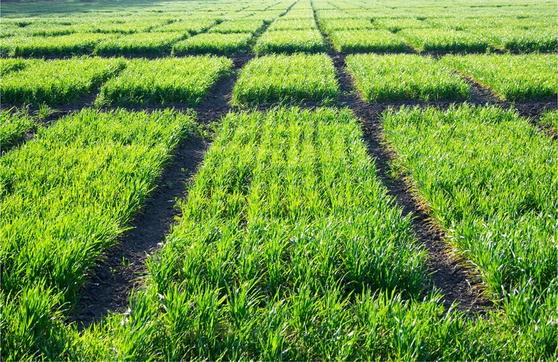
India needs to increase the production of essential food items like edible oils for its approximately 1.4 billion people, the second-largest population in the world. The previous fiscal year saw India spending a record $19 billion on vegetable oil imports. Before supplies could improve, the Russian invasion of Ukraine hampered imports and increased costs further.
It is imperative for India to identify and implement effective farming practices because of its expanding population and decreasing arable land. According to scientists, India can benefit by adopting farming technologies like Genetically Modified (GM) crops to enhance food security and reduce reliance on imports.
INCREASING ADOPTION OF GM CROPS
Today, GM crops are planted in more than 30 nations. In some instances, adoption rates of GM crops have exceeded 95% without any adverse impact. Until recently, only cotton could be grown as a GM crop in India.
The Indian government recently granted environmental approval for mustard that has been genetically modified (GM). The environmental release of the genetically modified mustard hybrid Dhara Mustard Hybrid (DMH-11) created by Delhi University for its seed production and testing before its commercial release was authorized by the biotechnology regulatory body Genetic Engineering Appraisal Committee (GEAC) in October 2022.
With this development, India’s first food crop may be ready for commercial release in roughly two years. Using DMH-11 for commercial production could boost output over currently available conventional hybrids by 25–30%. This boost in output is likely to significantly increase the country’s oilseed production, which is now only about 1,200 kg/hectare compared to the average global yield of 2,000 kg/hectare
HOW GENETIC MODIFICATION ENHANCES CROP QUALITY AND YIELD
Because it can provide specific alterations in crop types that are extremely difficult to obtain through regular breeding of plant lines, GM is a highly beneficial technology. The scientific objective behind genetic alteration in DMH-11 was to make the mustard crop adaptable to hybridization.
Hybrid plants produced by crossing genetically different parents show greater yields and adaptability. This phenomenon called heterosis, also known as hybrid vigor, has been extensively used in crops like maize, pearl millet, rice, sunflower, and many vegetables. Across all crops, hybrids produce 20–25% more yield than conventionally developed cultivars.
Traditionally the rising demand for GM crops results from features like insect tolerance and herbicide tolerance. The excellent nutritional value, greater production, and longer shelf life of GM crops are further advantages. GM mustard on the other hand bring forth an efficient way to produce mustard hybrids by producing male sterile lines. All the different scientific breakthroughs generated via the genetic modification process could assist farmers in finding sustainable and profitable agricultural solutions while also ensuring the well-being of associated communities, animals, and the environment.
ROLE OF RESEARCH INSTITUTIONS
Creating a favorable environment for our agricultural scientists to research biotech crop and develop improved crops, is in the best interests of consumers and farmers. As per recent reports, Indian institutions are developing genetically modified seeds for 13 different crops, including rice, wheat, and sugarcane, to increase their output and quality. These research initiatives include breeding GM crops for various features, including increased yields and tolerance to biotic and abiotic stress. The government-run Indian Council of Agricultural Research (ICAR) and other organizations are researching to create GM varieties of the potato, pigeon pea lentils, chickpeas, and bananas.
CONCLUSION
India has inherent advantages, and experts see enormous prospects for the agricultural potential to be unlocked with the appropriate technology, investment, and policies. Increased government funding for research and development of new seed varieties that are more durable and sustainable is required to safeguard the interests of farmers.
Several factors, including the use of fertilizers, water availability, and soil health, influence the yield of a specific crop. Therefore, while promoting new solutions like GM crops, all other production aspects must also be taken into account. The government has invested heavily in specific farmer-centric programs; to support such programs, big infrastructure investments that improve soil, water, and general farming methods need to be prioritized.
Moving forward, it is important for stakeholders and decision-makers to create an encouraging framework for the industry to invest in emerging technologies that could boost agricultural output. Collaboration with public sector organizations would be critical in the distribution of seeds to guarantee fair price and pan-India availability.
References:
- https://indianexpress.com/article/opinion/columns/on-gm-follow-the-science-8341304/
- https://www.business-standard.com/article/economy-policy/india-deeply-engaged-in-developing-gm-seeds-for-13-crops-122122300889_1.html
- https://www.downtoearth.org.in/blog/agriculture/gm-mustard-need-to-address-economic-issues-of-using-the-crop-86802
- https://indianexpress.com/article/cities/pune/heres-how-corteva-agriscience-is-looking-to-introduce-gm-seeds-in-india-8381442/
Dec 25, 2022 | Blog
Since the 2000s, floods have multiplied four-fold, and droughts have surged by over a third in a generation. Experts have predicted for a long time that crop failures can be aggravated by climatic variability, potentially leading to food shortages. This threat is especially true for drier conditions which can make crops susceptible to disease and pests. By 2050, the UN estimates, we’ll need to produce 50% more food to support the world’s expanding population. However, the majority of our prime farmland is already in use and suffers from the effects of over-use. Therefore, we must find a way to grow more food on the same or lesser land.
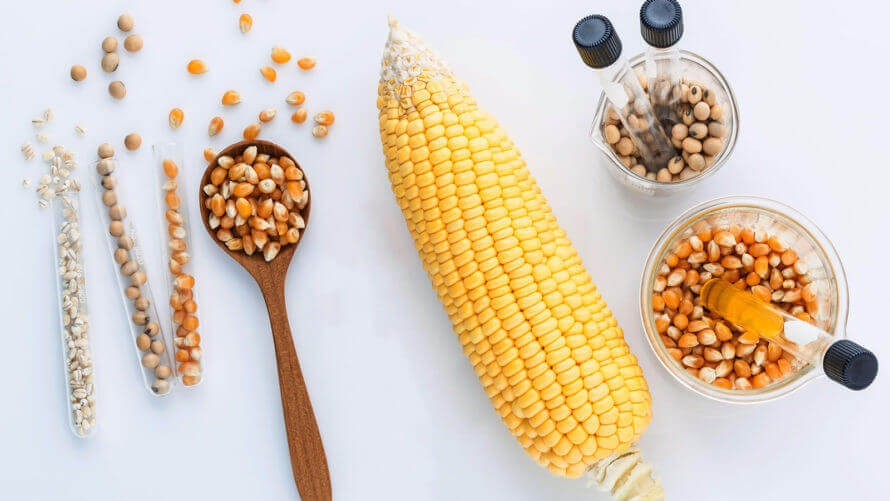
AN EMERGING TECHNOLOGY, GENE EDITING CAN HELP DEAL WITH GLOBAL FOOD CHALLENGES
Scientists have been working on emerging technologies that can help improve desirable characteristics of a plant by leveraging its genetic code. Academic researchers and agri-businesses are modifying staple crops with revolutionary gene-editing technologies to make them more resilient to changing climate and address the growing worries about food security. CRISPR gene-editing technology, a new biological method for creating commercially valuable crop characteristics, has recently attracted scientific interest. Scientists expect CRISPR to improve environmental sustainability, food quality, and production.
UNDERSTANDING THE POTENTIAL OF GENE EDITING AND CRISPR
Clustered Regularly Interspaced Short Palindromic Repeat, or CRISPR is a relatively recent method of modifying an organism’s genome. This powerful CRISPR technology enables scientists to change DNA sequences and adjust gene function in species more quickly. Gene-edited plants differ from the GMOs as they mostly do not have introduced DNA . Instead, many of the CRISPR-edited plants could appear naturally in nature — due to spontaneous mutations. This process not only makes obtaining regulatory approval easier, but it may also promote public acceptance, which is essential for making CRISPR-edited food acceptance for consumers. Here are some ways scientists are utilizing CRISPR to create healthier, more enticing, and more durable foods.
ENHANCED TOMATOES
Our brains naturally create the chemical Gamma aminobutyric acid (GABA), which could help treat high blood pressure, sleeplessness, and other health issues in addition to reducing stress and anxiety, according to research that has connected GABA to these effects. Now, people in Japan can enhance their GABA consumption without using supplements by consuming a gene-edited cultivar of tomatoes designed to generate less of an enzyme that degrades the fruit’s natural GABA.
SUPER GRAINS
Researchers from China and Germany deactivated a maize kernel-producing gene in corn using CRISPR technology – with an increase to 16 from 14 rows per ear, corn yields rose by 10%. A similar gene was silenced in rice, increasing yields by 8%.
IMPROVED MUSTARD
A leafy vegetable with lots of nutrients, mustard greens have fewer calories. Still, due to a reaction between two ingredients, they have a notably bitter flavor, which may deter some grocery shoppers from adding them to their carts. A food-tech company has created mustard greens with a softer taste by editing off one of the two bitterness-causing elements using CRISPR.
NUTRITIOUS POTATOES
“Polyphenol Oxidases” (PPOs) cause the starches in a potato to react with the air when it is chopped or peeled, turning the flesh brown; this can reduce the potato’s nutritional value and make it appear less appetizing. In 2020, Argentine researchers shared that they had silenced using CRISPR a gene that triggers cells to make PPOs, leading to potatoes that brown slowly.
DISEASE-RESISTANT BANANAS
African bananas are susceptible to the bacterial disease banana xanthomonas wilt (BXW), which is particularly contagious. It has cost, the economy billions of dollars in losses over the last ten years and put millions of people’s jobs and food security in danger. Researchers in Kenya are using CRISPR to decrease the expression of specific genes that rise in infected banana plants, resulting in bananas that are resistant to BWX.
MOVING FORWARD
Latest developments in technology, genomic sequencing, and artificial intelligence have made it possible to significantly alter how plants have been grown in the last ten years. Using these technologies, we can strive toward producing enough food and fiber for everyone on the planet while ensuring that the environment and farming communities are well-cared for. Agricultural institutions and governments should collaborate to make science-based decisions to establish a direct road to market that is open to businesses and organizations of all sizes to maximize the benefits for all.
7 ways CRISPR is shaping the future of food (freethink.com)
https://www.fdli.org/2021/11/the-future-of-food-crispr-edited-agriculture/
https://www.nationalgeographic.com/environment/article/food-technology-gene-editing?loggedin=true&rnd=1670580715351
https://www.eastmojo.com/environment/2022/10/30/future-food-depends-on-the-cutting-edge/
https://www.forbes.com/sites/forbescommunicationscouncil/2022/11/22/building-a-more-sustainable-food-system-through-technology/?sh=726b870fcfcc
Dec 25, 2022 | Blog
Our environment is a delicate balance of biodiversity and climate that respond of human interventions. Agriculture is most impacted by any changes in this balance and contributes the most to the environmental changes. Agriculture systems have been facing new environments that are changing faster than their rate of adaptation in different habitats and ecosystems. The ecological landscape is being substantially altered by warming temperatures and changing precipitation patterns, which in turn endanger the habitat of some plant and animal species. As a result of inclement weather conditions like drought, heat wave and flood the agricultural output has decreased and the world’s food supplies are impacted. Various warming scenarios are predicting a greater global drop in agricultural output.
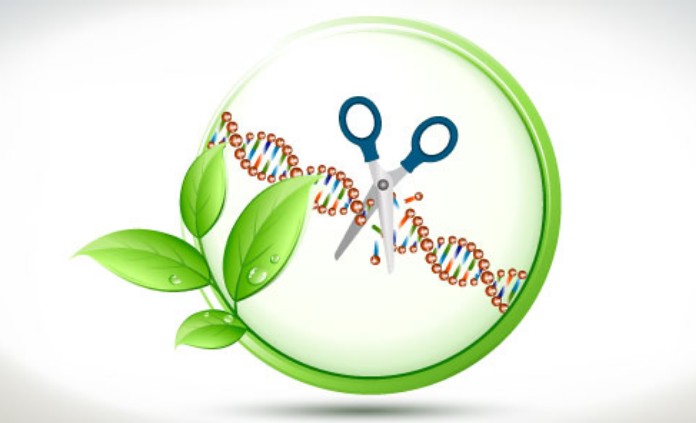
THE CUTTING-EDGE TECHNOLOGY OF GENE EDITING COMES TO THE RESCUE
Gene editing is a powerful tool to help species adapt to climate change or lessen the consequences of climate change on agriculture in response to these difficulties.
Gene editing lets researchers to genetically alter specific locations in an organism’s genome. Compared to other plant breeding techniques, it is precise, quick, efficient, and less expensive. By enhancing features like increased nutrition, pest and disease resistance, and drought tolerance, editing technology enables us to improve the quality of crops. A few examples of recent gene editing research and applications that will help plants adapt better to climate change are listed below.
BUILDING TOLERANCE OF SALINITY IN RICE
Drought and salinity are two significant abiotic factors that influence rice, demanding an investigation into the possibilities of utilizing gene editing to develop resistant varieties. One such investigation involved using CRISPR/Cas9 to disable the rice gene OsRR22, which is linked to salt susceptibility. Edited rice plants performed better under high salt conditions without a drop in grain yield, plant biomass, or grain quality.
ENHANCING TOLERANCE FOR DROUGHT
The primary locations of water loss in plants are the stomata, which are anatomical structures on the surface of all agricultural plant tissues. Rice has been edited by focusing on stomatal growth to increase its resistance to drought and hot temperatures. In a specific study, rice lines with lower stomatal density showed encouraging yields in extreme drought and maintained lower temperatures. Thus, by lowering stomatal density through gene-editing methods, plants may be better able to withstand water shortages and likely be more tolerant to heat.
INCREASED DISEASE RESISTANCE IN RICE
Modeling two severe rice diseases in Tanzania, leaf blast and bacterial leaf blight, suggested that climate change may affect pests and diseases differently across geographies and time scales. A variety of rice diseases have responded very well to gene editing. To create OsSWEET13 knockouts, CRISPR/Cas9 was employed. SWEET family genes encode sucrose transporters that can be utilized by pathogens. This gene’s mutation significantly increased disease resistance.
VARIETIES OF SEMI-DWARF BANANAS
For efficient banana harvest and mechanized plant maintenance, experts recommend dwarf cultivars. The creation of a semi-dwarf type of banana has been aided by gene editing. CRISPR/Cas9 was used to create knockouts of genes involved in making certain plant hormones that regulate various developmental processes. Strong winds and storms are predicted to get worse due to climate change; this semi-dwarf variety may be more resilient to lodging and wind damage.
PROMOTIONAL EDITING FOR MAIZE DROUGHT TOLERANCE
Gene editing techniques can also assist knock-ins (gene insertion) in addition to producing knockouts. To boost drought tolerance in maize, scientists employed CRISPR/Cas9 to introduce a gene promoter in a particular region. ARGOS8, a gene linked to drought tolerance, was preceded by an alternative maize promoter. Greater grain production was made possible while sustaining yields under normal growth conditions because of this exact insertion.
DEVELOPMENT OF VIRUS RESISTANCE IN CUCUMBER
CRISPR/Cas9 was utilized to prevent viral infections by creating deletions in the eIF4e gene in cucumber. Reduced symptoms and viral buildup were seen in homozygous mutant lines that were resistant to papaya ringspot virus-W, zucchini yellow mosaic virus, and cucumber vein yellowing virus.
CONCLUSION
Gene editing techniques have created enormous possibilities for crops that can better withstand the effects of climate change. As discussed above, several gene editing initiatives have demonstrated promise in promoting climate resistance. Consequently, the use of advanced technology like gene editing in crop production is strongly recommended by several experts in the agriculture sector. According to scientists, gene editing can aid in developing robust crops to counteract the detrimental effects of climate change on agricultural production.
Climate change: Gene editing can help create resilient crops – Genetic Literacy Project
https://www.frontiersin.org/articles/10.3389/fsufs.2021.685801/full
https://www.foodingredientsfirst.com/news/resilient-crops-on-the-horizon-after-uks-gene-editing-bill-progresses-to-house-of-lords.html
https://www.ft.com/content/337ba132-cc33-42a9-9df3-cd53114200bc
Dec 5, 2022 | Blog
We don’t just eat to stay alive; food decides our way of life and daily lifestyle. However, how we now produce food can impact the environment by polluting land and water, hastening climate change and the biodiversity, and decreasing the productivity of our farms and fields, over time. Global food production must become sustainable in the coming years to help agricultural communities flourish and facilitate the restoration of natural resources.
When we look for solutions to strengthen the global food supply chain while dealing with the deteriorating consequences of climate change, regenerative smart agriculture is one of the most practical answers to boost food production to feed the expanding world population. A sustainable food system can take us beyond simple sustainability and accelerate positive growth that benefits the millions of farmers and other food producers across the globe.
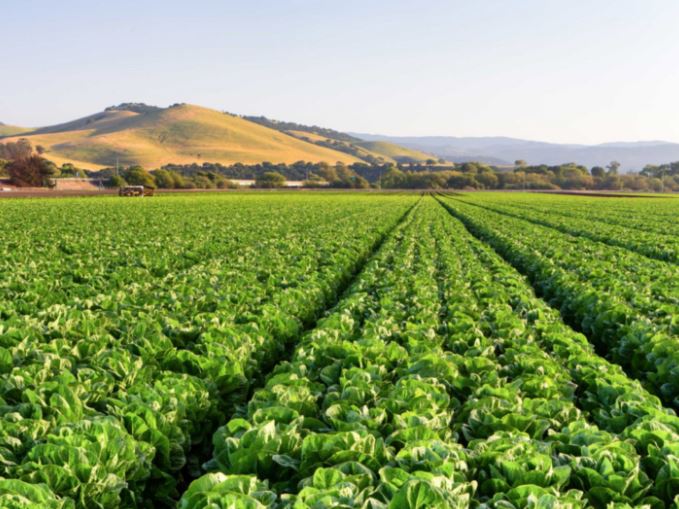
REDUCING NATURAL RESOURCE USE FOR SUSTAINABLE PRODUCTION
Regenerative smart agriculture focuses on reducing the resources needed for food production, principally soil and water, but not exclusively, to ensure sustainable production. It considers water bodies, rivers, and lakes to improve the health of the farm’s environment. The health of the soil is a primary focus area, but other factors, such as fertilizer and water management, are also taken into account.
Smasrt farming creates healthier soils, producing food of superior quality and nutrient density, improving rather than degrading the environment, and ultimately resulting in productive farms, economies, and communities. Farming methods like conservation tillage, crop rotation, pasture cropping, and mobile animal shelters enrich topsoil and increase food production.
WHY IS SUSTAINABLE AGRICULTURE ESSENTIAL?
The loss of the planet’s biodiversity, and degradation of fertile soils threaten our continued existence. Chemical pollution, decarbonization, and desertification contribute to soil deterioration rates. These factors have the potential to seriously harm not only public health but also the quality of the food supply, leading to malnutrition. We need to re-carbonize and safeguard the soils to have enough arable topsoil to feed ourselves. An essential part of regenerative farming consists of diversifying species above and below the earth to boost biodiversity. For instance, planting a million trees on farms and in landscapes, such as fruit and shade trees in cocoa-growing regions, aids in the restoration of crucial ecosystems.
ROLE OF TECHNOLOGY
Regenerative tools, including no/low till, crop rotation and diversity, cover crops, and lowering farm inputs all contribute towards sustainability. Precision agriculture components like deeper analytics to guide seed selection, inputs and pest management offer advantages from a conservation viewpoint over a reasonable period. Today, we have access to innovative, and ever-more-precise methods. A new area of aided breeding has opened up due to decoded genomes and methods for analytics and regulating genes that drive particular plant features. This can include transgenic (foreign gene modification/insertion) and intragenic (internal gene alteration).
CONCLUSION
Food production has impacted the environment and it is a significant contributor to greenhouse gas emissions and uses 70% of all freshwater. On the other hand, it is also responsible for the livelihood of a substantial part of the world’s population.
Smart agricultural techniques combined with emerging technologies can help us effectively deal with these challenges. Changing to a food system would allow us to produce food both on land and at sea in ways that are compatible with the environment. Together, we can turn the challenge of securing global food security into our most incredible opportunity: we can build sustainable agriculture systems that foster growth for people, businesses, and the environment.
In addition to traditional solutions, new and developing technologies will undoubtedly be used in the future of food and agriculture. While creating a food supply for a rapidly expanding population, we can restore habitats, protect clean drinking water, increase biodiversity, and reduce greenhouse gas emissions by developing innovative strategies in collaboration with producers.
References:
The future of food: The regenerative imperative (newhope.com)
https://www.nature.org/en-us/what-we-do/our-priorities/provide-food-and-water-sustainably/food-and-water-stories/regenerative-food-systems/
https://www.manilatimes.net/2022/11/17/business/agribusiness/its-time-to-consider-regenerative-agriculture/1866573
https://tractorguru.in/blog/regenerative-agriculture-in-india-for-leading-to-productive-farms/
https://regenerationinternational.org/why-regenerative-agriculture/
Dec 5, 2022 | Blog
India has made significant progress toward being a self-sufficient food producer after being a net food importer in the 1960s. The UN’s Food and Agriculture Organization (FAO) reports that India is the second-biggest producer of rice, wheat, sugarcane, groundnuts, vegetables, and fruits. It is the largest producer of milk and pulses and a significant producer of plantation crops, spices, fish, poultry and livestock. It ranks first or second among several non-food crops, including cotton and jute. This success has also created a crisis of abundance as the food supply chain infrastructure needs significant strengthening to manage excess production.
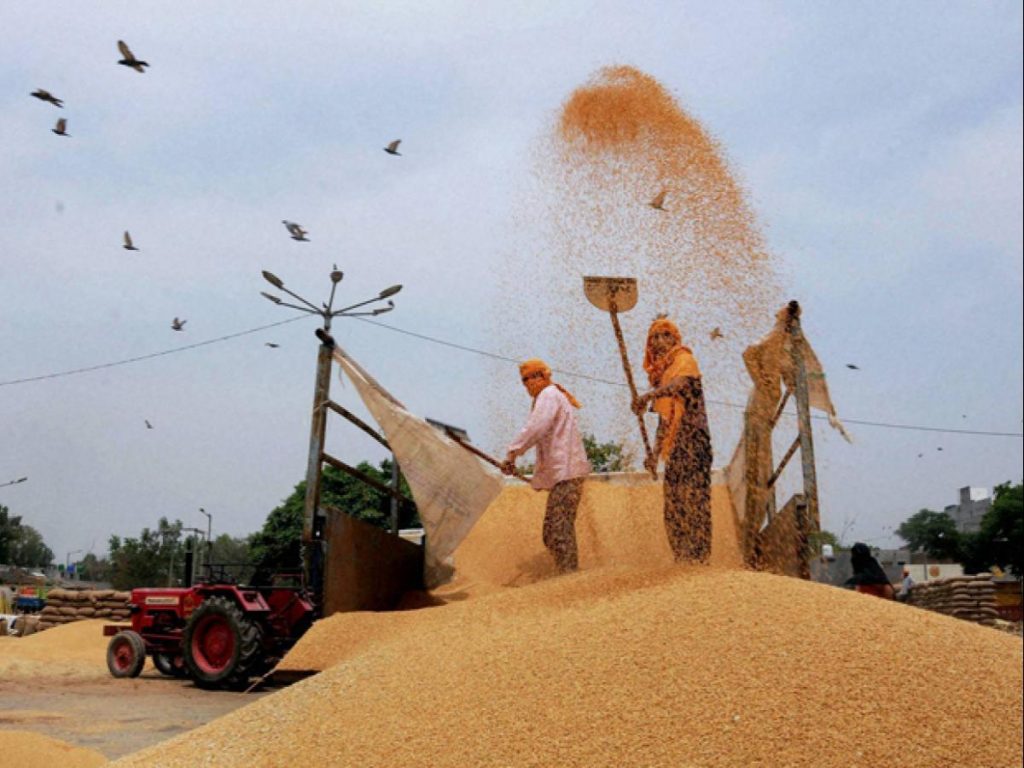
HOW MUCH FOOD IS LOST BETWEEN HARVEST AND RETAIL?
Any food that is discarded, burned, or otherwise disposed of after harvesting along the food supply chain is referred to as food loss. This loss excludes the retail level and any waste that is applied to other productive uses, such as the production of feed or seed. To highlight the different terms, while “food waste” occurs after the food reaches the retailer or customer, “food loss” occurs during or shortly after harvest
As per an estimate, during or immediately after harvest, globally up to $600 billion worth of food is lost on farms or in their vicinity. FAO sets India’s food loss and waste at 40%, whereas the government-owned Food Corporation of India (FCI) puts it at over 15%.
Comprehensive studies on agri-losses have been undertaken in India by the Central Institute of Post Harvest Engineering and Technology, Ludhiana (CIPHET), a unit of the Indian Council of Agricultural Research (ICAR). Using production data from 2012–13 at 2014 wholesale prices, CIPHET estimated the annual value of harvest and post-harvest losses of primary agricultural produce at the national level at Rs. 92,651 Crore.
COLD STORAGE CHALLENGES
In a diverse country like India, food is produced in one region and then shipped all over the nation. For instance, grains are grown in Maharashtra and transported nearly throughout India. The government plays a significant role, purchasing around 75 million tonnes of the 300 million tonnes of grains produced in India through the MSP mechanism. A significant quantity of these grains is stored in traditional godowns or outside in the open shade leading to substantial losses to the exchequer.
India had 8,186 cold storage facilities with a combined 374 lakh million tonnes capacity as of September 2020. Bengal and Uttar Pradesh account for roughly 65% of this. Potatoes use about 75% of the cold storage space. According to estimates, India loses between 30 and 40 percent of its fruits and vegetables yearly due to inadequate cold storage facilities. This is significant as we are striving for nutritional security, especially for the vulnerable sections of the population.
IMPROVING INDIA’S POST-HARVEST SUPPLY CHAIN INFRASTRUCTURE
India’s hot and humid weather generally makes maintaining cold storage facilities more challenging. The problems magnify with extended heat waves and a rise in the frequency of extreme weather phenomena, including floods, droughts, and cyclones. We need a complete upgradation of storage facilities (especially in rural areas) that can minimize power and water usage while reducing post-harvest losses. One way to achieve this is by expanding access to finance for climate resilient technology adoption for storage facilities.
The Ministry of Food Processing Industries has been implementing several schemes to reduce losses in agricultural produce’s supply chain and improve the existing food processing infrastructure. These schemes include Mega Food Parks, Integrated Cold Chain, Value Addition and Preservation Infrastructure, and Setting Up/Modernization of Abattoirs.
CONCLUSION
Recent innovations and modern solutions could help overcome food insecurity, enhance access to nutrition and ensure long-term food sector sustainability. All stakeholders must collaborate to encourage private sector innovations that can share the burden of improving agricultural resilience and complement public sector projects.
For example, Cooling-as-a-service is a global innovation where local cold-chain technology providers own, maintain, and operate cooling systems in a decentralized manner. In India, this innovation has been initiated through the Your Virtual Cold Chain Assistant program, conceptualized to minimize post-harvest losses by decentralizing cold storage facilities.
The Indian government introduced the Agriculture Infra Fund (AIF) on July 8, 2020, as a long-term debt financing plan for developing post-harvest management infrastructure and community farm assets. The government has initiated an action plan to invest about Rs. 9,200 crore over the following four to five years to facilitate the construction of wheat silos with 11-mt capacity using the PPP mode at 249 locations throughout the nation. These are significant steps on road to minimizing food loss.
https://www.fortuneindia.com/long-reads/can-india-be-a-global-food-bowl/109640
https://www.mckinsey.com/industries/consumer-packaged-goods/our-insights/reducing-food-loss-what-grocery-retailers-and-manufacturers-can-do
https://www.thehindu.com/business/Economy/india-exported-18-million-tonnes-wheat-to-several-countries-since-ban-food-secretary/article65567118.ece
https://pib.gov.in/newsite/PrintRelease.aspx?relid=148566
https://pib.gov.in/PressReleasePage.aspx?PRID=1658114
https://www.un.org/en/observances/end-food-waste-day
https://www.sundayguardianlive.com/news/stop-wastage-india-developing-capacity-store-10-million-tonnes-food-grains
https://www.orfonline.org/expert-speak/minimising-losses-to-achieve-agricultural-resilience/
https://www.indiatoday.in/india/story/india-grows-more-food-wastes-more-while-more-go-hungry-1752107-2020-12-22
https://www.financialexpress.com/economy/plans-afoot-to-build-3-4-mt-silos-under-ppp-mode/2610149/
Sep 6, 2022 | Blog
Farmers have always strived to improve the soil’s chemical and physical properties, so that diverse nutrients are available to plants, soil retains more moisture, and plant root growth is facilitated. However, farmers might have overlooked the importance of the thriving diversity of microbes in the ground.
Millions of microorganisms are found in soil and plants, and together they make up a microbial community known as the microbiome. This community, which includes several microorganisms like bacteria, fungi, viruses, protozoa, and archaea, can influence crop output and plant growth in both favorable and unfavorable ways. Numerous elements, such as the environment, the physical characteristics of the soil, the availability of nutrients, and the types of plants, impact the composition of a given microbiome.
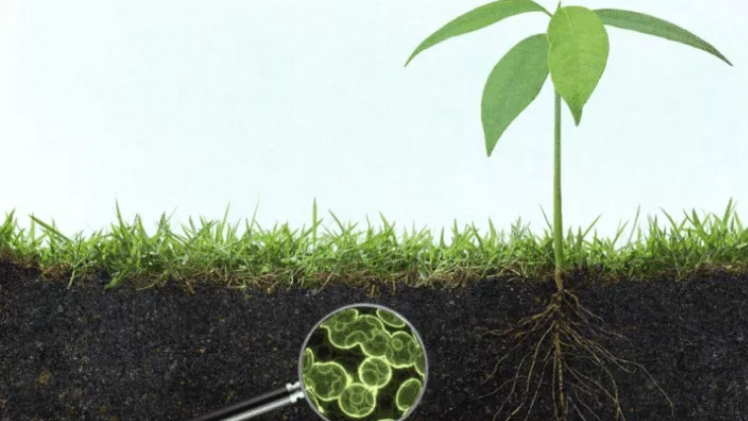
ROLE OF SOIL MICROBIOME
Up to 98.8% of the food we eat is produced by different types of soils and associated bacteria. As per Food and Agriculture Organization (FAO), depending on the terrain, soil erosion might lead to 20–80% agricultural yield losses due to human activities and climate change. Additionally, only 0.25 to 1.5mm of new topsoil (the topmost, organically rich layer of soil, often the top 5 to 10 inches) is produced yearly.
Although soil is often seen primarily as a source of plant nutrients, it is a complex ecosystem. Researchers have discovered that reservoirs of subsurface soil microbiomes may be crucial for the soil formation, the biodegradation of pollutants, and the preservation of groundwater quality.
SOIL MICROBIOME ASSISTS PLANTS IN DEVELOPING TOLERANCE TO DROUGHT AND HEAT
Recent studies have demonstrated that by introducing diverse microbiota, such as fungi or bacteria that colonize other species, into essential food crops, they can be rendered noticeably more stress resistant. An excellent example is Mycorrhizal fungi, which colonize plant roots and aid their soil penetration. In the UK, a certified mycorrhizal product aids in the establishment of seedlings. To improve the plants’ access to moisture and nutrients, the fungi that colonize the seedlings’ root systems send out networks of their underground filaments, known as hyphae. This is a mutually beneficial interaction because the fungi rely on photosynthesis in plants to obtain the sugars they require to develop.
Glomalin, a glycoprotein secreted by fungi to coat their hyphae, can encourage soil particle aggregation, increasing moisture retention. But in addition to improving fundamental aspects of plant biology, the soil microbiome can also affect more subtle features. Field trials of wheat, maize, barley, rice, and soybeans that were produced using seeds coated in fungal spores derived from heat- and salt-resistant plants are currently taking place in various parts of the United States to determine the ideal fungus for each crop and environment.
A DIVERSE SOIL MICROBIOME IS ESSENTIAL FOR SOIL HEALTH AND CROP PRODUCTIVITY
Three essential natural resources are needed for agricultural productivity: light, water, and good soil. To fulfill the rising demand for food requirements worldwide, agriculture approaches that do not rely on increased water usage and fertilizers must be used. A healthy microbiome can support its host by promoting plant growth, improving nutrient utilization, and preventing pests and phytopathogens.
Soils are home to millions of species and billions of individual organisms, ranging from tiny microbes to larger creatures like ants and earthworms. One gram of soil can support thousands of unique species, including entities from all three domains of life. The largest group, in terms of variety and number, is composed of bacterial species. The diversity of a microbial inoculum is now widely regarded as just as significant as its capacity to promote plant growth.
CONCLUSION
The ability of plants to generate food, fuel, and fiber for an expanding global population depends critically on the condition of the soil. The so-called “phytobiome”—the microbiota associated with soil and plants—may be significantly impacted by agricultural intensification due to high resource consumption and low crop diversification, which can harm essential ecosystem functions.
Through further research and innovation, agricultural productivity can benefit immensely by using the functional potential of the microbiome associated with plants. Scientists are exploring new scientific techniques to monitor the flow of nutrients via a plant, its microbiome, and the soil around it. These tools will open up new possibilities for developing more effective microbial consortia.
Sep 6, 2022 | Blog
Over the past 10,000 years, agriculture has withstood moderate climatic changes due to the diversity in species, varieties, and cultivation techniques. The early farmers chose to cultivate plants that produced big, edible seeds, even without knowledge of genetics. These cultivated plants developed unique varieties as they dispersed over the globe. The enormous range of foods we enjoy is also a result of genetic variation within crops.
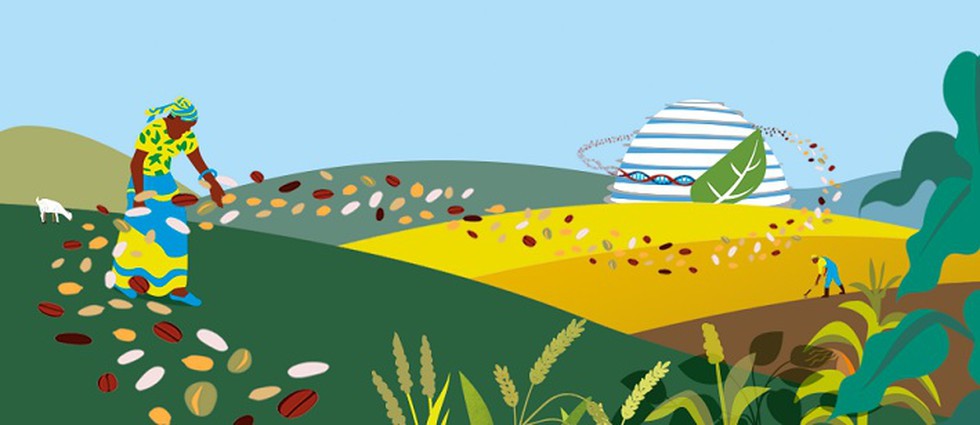
HOW NATIONS ARE COMING TOGETHER FOR CONSERVATION AND SUSTAINABLE USE OF PLANT GENETIC RESOURCES
The goals of preservation and open exchange of crop diversity are in the interests of all nations. According to a resolution made by the FAO Conference’s Twenty-second Session, the Commission on Plant Genetic Resources for Food and Agriculture was founded in 1983. The International Undertaking on Plant Genetic Resources for Food and Agriculture, a non-binding agreement designed to encourage harmony in managing plant genetic resources globally, was endorsed by the same resolution.
The International Treaty on Plant Genetic Resources for Food and Agriculture (ITPGRFA), also known as International Seed Treaty, or Plant Treaty, was drafted in Madrid in 2001 and went into effect on June 29, 2004. The Treaty mandates that plant genetic resources for food and agriculture must be conserved and used sustainably. The second goal is the equal and fair distribution of gains from using these resources. It also creates a multilateral structure to make access to all crops easier.
A GLOBAL POOL OF GENETIC RESOURCES FOR SHARED ACCESS AND BENEFITS
The Multilateral System, the Treaty’s novel approach to access and benefit sharing, incorporates 64 of our most significant crops into a readily available global pool of genetic resources for potential users in the Treaty’s ratifying nations. These 64 crops represent 80% of the food we obtain from plants.
The Treaty aims to: recognize the significant role that farmers play in the diversity of crops that feed the world; create a global system to give farmers, plant breeders, and scientists access to plant genetic materials; and make sure that recipients share any benefits they derive from using these genetic materials with the countries from which they were originally sourced.
TRADITIONAL CROPS ARE A CRITICAL COMPONENT OF SUSTAINABLE FOOD PRODUCTION
The Plant Treaty encourages the creation and upkeep of different farming systems and helps to maximize the usage and breeding of all crops. Thousands of indigenous crops have been dormant or unused for many years. Traditional crops can contribute to the development of sustainable food production systems and halt the spread of some pest and disease infestations.
For small-scale or family farmers, several traditional crops may have high economic potential and make excellent revenue crops. For instance, quinoa was a subsistence crop in Bolivia, Peru, and Ecuador until it gained attention, and production nearly tripled between 1992 and 2010.
SAFEGUARDING INDIGENOUS KNOWLEDGE OF FARMERS HELPS BIODIVERSITY CONSERVATION
Indigenous people around the world play a significant role in protecting agricultural biodiversity. For example, Alder (Alnus nepalensis) has been grown by Khonoma farmers in Nagaland’s “jhum” (shifting cultivation) fields for millennia. It is a nitrogen-fixing tree with various uses for farmers since it keeps the soil fertile. In addition to being used as wood, its leaves are used as fertilizer and fodder.
The Plant Treaty acknowledges the significant contribution farmers have made to the continued advancement of the abundance of plant genetic resources available worldwide. It urges safeguarding the farmers’ traditional knowledge, enhancing their involvement in national decision-making processes, and ensuring they receive a portion of the benefits from utilizing these resources.
CONCLUSION
Plant genetic resources are crucial because they enable us to adapt crops to fit our needs and solve the difficulties of local, regional, and global food needs. Crop types that are adapted to local ecological conditions can lower the risks associated with climate change. However, there is an urgent demand for adapted germplasm (collection of genes with desirable traits) that necessitates characterization, evaluation, and the availability of resources. The collaboration frameworks provided by the plant treaty can ensure appropriate protection and responsible utilization of crop genetic variety to achieve the goals of human nutrition and food security.
Jul 19, 2022 | Blog
The pandemic and the Ukraine conflict have brought to light massive food shortages that are only expected to worsen. According to the World Bank, the world will need to increase food production by 70% to 100% in the next 50 years due to population growth, changing consumption patterns and climate change.
Genome editing technologies have shown a considerable potential to solve these global concerns in recent years by assisting in the transformation of biological research and creating a significant impact on human health, food security, and environmental sustainability.

Gene editing helps develop specific genetic variants that are indistinguishable from naturally evolved variants in their most basic form. With the popular SDN (Site-Directed Nuclease) approach, scientists can target a specific gene – already present within a plant’s genome – and alter or ‘edit’ it to achieve a desired characteristic, such as pest or heat tolerance, using the latest ‘gene-editing’ tools.
Scientists use SDN1 and SND2 procedures to edit a gene without introducing a foreign DNA. Regulation of these genome-edited plants in various countries is rapidly evolving to keep up with the new technologies and harmonize trade across the world.
COUNTRIES THAT MOVED EARLY TO ADOPT GENE EDITING TECHNOLOGY
Argentina was the first country to announce in 2015 that crops that do not contain foreign DNA would not be regulated under biosafety regulations. Chile, Brazil, and Colombia were quick to follow.
In 2018, the US department of Agriculture (USDA) decided not to impose regulation on new breeding technologies comprising genome editing. Since 2019, Australia has not regulated SDN1 genome editing applications and discussions are underway for SDN2 types of gene editing.
In 2021, Nigeria has issued guidelines for regulation of gene editing wherein if the product does not have a transgene or the transgene has been removed, it is treated similar to a conventionally bred variety, effectively exempting SDN1 and SDN2 out of GM regulation.
As of January 2019, Japan too does not regulate gene edited products differently than traditionally produced types. However, there is a requirement of a premarket consultation where developers are asked to provide information confirming that the product is gene edited and indicate if the developer has any reason to believe it poses a risk to biodiversity.
Other countries like Kenya, Israel, Philippines and China have exempted gene editing from regulatory purview of GMOs and have introduced gene editing guidelines.
HOW THE DIFFERENT REGIONS OF THE WORLD ARE REAPING THE BENEFITS OF GENE EDITING
Plant science and its applications in agriculture are being transformed through genome editing to create more beneficial plant varieties. Several crops or plants have already been recognized as having market-oriented applications. These include major crops like rice, maize, wheat, and potatoes. Many more crops are being studied, like peanuts, lettuce, lemon, cacao, banana, and sugar cane. The majority of these crops have one or more improved traits like agronomic features (height, biomass, etc.), food and feed quality, or biotic stress tolerance.
For example, Brazilian researchers have created a tomato variety that is ten times more productive than the usual crop. In addition, the new fruits have 500 percent more lycopene, a beneficial antioxidant, than store-bought tomatoes. A cross-border research effort has developed a type of rice that is immune to bacterial blight, which is a catastrophic problem in Columbia, where 41 percent of the population is affected by food insecurity.
DEVELOPMENTS IN INDIA
The Government of India introduced gene editing guidelines for evaluating the safety of genome-edited plants to help speed up crop genetic development in India. SDN1 and SDN2 genome-edited crops have been exempted from the strict biosafety requirements that apply to genetically modified (GM) crops.
Crop quality, yield, nutritional enhancement, and adaptation to both abiotic (droughts and floods) and biotic stressors are the traits that can be enhanced through gene-editing. Extreme occurrences driven by climate change, such as the recent heatwave that impacted wheat production in northwest India, necessitate crop features like these. Emerging gene editing technologies aimed at crop enhancement could help farmers adapt to the effects of climate change, as well as help them enhance their income levels and produce quality crops for the consumers.
https://www.timesofisrael.com/spotlight/can-gene-editing-help-farmers-satisfy-the-rising-demand-for-food/









